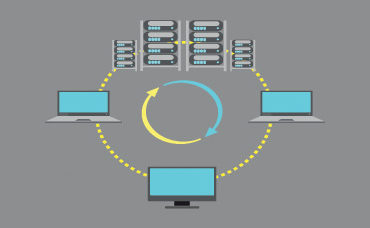VMs Still Have Legs, Survey Finds

Faster server provisioning and consolidation along with long-term cost savings remain the key benefits of virtualization, according to a new vendor survey, with virtual machines keeping pace with trendy application infrastructure such as Linux containers and hybrid cloud computing.
In a survey of enterprise IT managers and system architects released on Monday (Oct. 17), open source software leader Red Hat Inc. (NYSE: RHT) reported that virtualization remains strategic, particularly as enterprises look to reduce datacenter costs.
"Cost pressures clearly remain top of mind, with cost or cost reduction ranking as [the] greatest challenge, an expected benefit and main reason to migrate" to virtual machines, the Red Hat survey of more than 900 IT planners found.
Fifty-five percent of those polled said faster server provisioning was the main benefit of virtualization, followed by cost savings (49 percent) and server consolidation, a related cost saving (47 percent).
Moreover, respondents said they expect to increase both virtualized infrastructure and workloads by 18 and 20 percent, respectively, the survey found. Web applications, including websites, were the most common virtualized workload at 73 percent, while web application servers were cited by 70 percent of respondents. Meanwhile, 67 percent cited databases.
As datacenter operators move to provide infrastructure for developers to quickly build and deploy applications—a driving force behind the shift to Linux application containers—a substantial 85 percent of survey respondents nevertheless said they are developing applications on virtual machines while nearly two-thirds said they are also deploying VM-developed applications on virtualized infrastructure.
Reduced IT overhead costs and smaller datacenter footprints remain paramount. "It appears the traditional benefits of virtualization still ring true," the authors of the Red Hat survey asserted.
Still, cost cuts both ways, the survey found, especially since migrating workloads and maintaining virtual infrastructure continues to strain IT budgets. "Virtualization can save enterprises money. But getting there takes money," Red Hat said, citing the cost of proprietary software and licenses.
Upfront costs also could be mitigated by the growing reliability of virtual machines, high availability and improving performance.
Cost concerns may also be driving efforts to augment virtualization with emerging cloud and application development platforms. Sixty percent of those polled cited private clouds as their preference, followed by application containers (41 percent). That finding reveals how "these respondents may work to both optimize existing IT and build out new, cloud-native infrastructure or workloads," Red Hat said.
Besides server virtualization, nearly half of those queried said they are considering network and storage virtualization approaches over the next four years. "Virtualization is not being used in a vacuum, but part of a broader strategy to provide developers and applications with appropriate infrastructure, across virtualization, containers, private cloud and public cloud," Red Hat concluded.
Security remains an ongoing concern, although the virtualization poll found it was not a top concern. Nevertheless, virtualization vendors continue to emphasize improved security as workloads, servers, networks and storage run on virtual infrastructure.
For instance, market leader VMware (NYSE: VMW) announced a new vSphere encryption push that supports an encryption key management scheme from workload security specialist HyTrust Inc. VMware said this week its vSphere 6.5 cloud computing virtualization platform would support the ability to encrypt workloads using the HyTrust encryption method. VMware is an investor in HyTrust.
Related
George Leopold has written about science and technology for more than 30 years, focusing on electronics and aerospace technology. He previously served as executive editor of Electronic Engineering Times. Leopold is the author of "Calculated Risk: The Supersonic Life and Times of Gus Grissom" (Purdue University Press, 2016).










